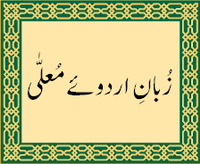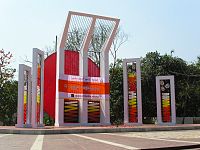
Urdu is an Indo-Aryan language spoken chiefly in South Asia. It is the national language and lingua franca of Pakistan, where it is also an official language alongside English. In India, Urdu is an Eighth Schedule language the status and cultural heritage of which are recognised by the Constitution of India; and it also has an official status in several Indian states. In Nepal, Urdu is a registered regional dialect and in South Africa it is a protected language in the constitution. It is also spoken as a minority language in Afghanistan and Bangladesh, with no official status.

Hindustani is an Indo-Aryan language spoken in Deccan, Northern India and Pakistan, and used as a lingua franca in both countries. Hindustani is a pluricentric language with two standard registers, known as Hindi and Urdu. Thus, it is also called Hindi–Urdu. Colloquial registers of the language fall on a spectrum between these standards. In modern times, a third variety of Hindustani with significant English influences has also appeared which is sometimes called Hinglish or Urdish.

Sir Syed Ahmad Khan, also spelled Sayyid Ahmad Khan, was an Indian Muslim reformer, philosopher, and educationist in nineteenth-century British India.

The All-India Muslim League (AIML) was a political party established in Dhaka in 1906 when some well-known Muslim politicians met the Viceroy of British India, Lord Minto, with the goal of securing Muslim interests on the Indian subcontinent.

The Bengali language movement was a political movement in former East Bengal advocating the recognition of the Bengali language as a co-lingua franca of the then-Dominion of Pakistan to allow its use in government affairs, the continuation of its use as a medium of education, its use in media, currency and stamps, and to maintain its writing in the Bengali script.
Hindustani is one of the predominant languages of South Asia, with federal status in the republics of India and Pakistan in its standardized forms of Hindi and Urdu respectively. It is widely spoken and understood as a second language in Nepal, Bangladesh, and the Persian Gulf and as such is considered a lingua franca in the northern Indian subcontinent. It is also one of the most widely spoken languages in the world by total number of speakers. It developed in north India, principally during the Mughal Empire, when the Persian language exerted a strong influence on the Western Hindi languages of central India; this contact between the Hindu and Muslim cultures resulted in the core Indo-Aryan vocabulary of the Indian dialect of Hindi spoken in Delhi, whose earliest form is known as Old Hindi, being enriched with Persian loanwords. Rekhta, or "mixed" speech, which came to be known as Hindustani, Hindi, Hindavi, and Urdu, also locally known as Lashkari or Lashkari Zaban in long form, was thus created. This form was elevated to the status of a literary language, and after the partition of colonial India and independence this collection of dialects became the basis for modern standard Hindi and Urdu. Although these official languages are distinct registers with regards to their formal aspects, such as modern technical vocabulary, they continue to be all but indistinguishable in their vernacular form. From the colonial era onwards, Hindustani has also taken in many words from English, with an urban English-influenced variety emerging known as Hinglish.

Muhammad Ali Jauhar was an Indian Muslim activist, founding member of the All-India Muslim League, a preeminent member of Indian National Congress, journalist and a poet, a leading figure of the Khilafat Movement and one of the founders of Jamia Millia Islamia.

From a historical perspective, Professor Ishtiaq Ahmed of the University of Stockholm and Professor Shamsul Islam of the University of Delhi classified the Muslims of the subcontinent into two categories during the era of the Indian independence movement: Indian nationalist Muslims and Indian Muslim nationalists. The All India Azad Muslim Conference represented Indian nationalist Muslims, while the All-India Muslim League represented the Indian Muslim nationalists. One such popular debate was the Madani–Iqbal debate.
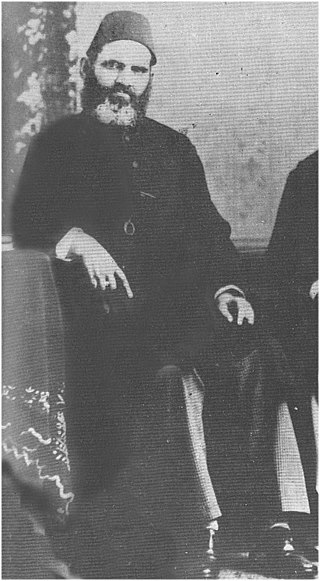
Nawab Mohsin-ul-Mulk, Munir Nawaz Jang, also known as Syed Mehdi Ali, was an Indian Muslim politician. He was a close friend of Syed Ahmed Khan, was involved in the Aligarh Movement and was one of the founders of the All India Muslim League in 1906.

The Hindi–Urdu controversy arose in 19th century colonial India out of the debate over whether Modern Standard Hindi or Standard Urdu should be chosen as a national language.

Maulvi Abdul Haq was a scholar and a linguist, who some call Baba-e-Urdu. Abdul Haq was a champion of the Urdu language and he demanded for it to be made the national language of Pakistan.
The Scientific Society of Aligarh was a literary society founded by Sir Syed Ahmad Khan at Aligarh, India. The main objectives of the society were to translate Western works on arts and science into vernacular languages and promote western education among the masses.
The Urdu Defence Association was an organisation developed by Mohsin-ul-Mulk, starting in 1900, for the advocacy of Urdu as the lingua franca of the Muslim community of India. The association is regarded as an offshoot of the Aligarh Movement.

Islam in Uttar Pradesh is the second largest religion in the state with 38,483,967 adherents in 2011, forming 19.26% of the total population. Muslims of Uttar Pradesh have also been referred to as Hindustani Musalman. They do not form a unified ethnic community, but are differentiated by sectarian and Baradari divisions, as well as by language and geography. Nevertheless, the community shares some unifying cultural factors. Uttar Pradesh has more Muslims than any Muslim-majority country in the world except Indonesia, Pakistan, Bangladesh, Nigeria, Egypt, Iran and Turkey.

The East Pakistan Renaissance Society was a political organisation formed to articulate and promote culturally and intellectually the idea for a separate Muslim state for Indian Muslims and specifically for the Muslims of Bengal. The organisation's founders and leaders included Abul Kalam Shamsuddin, the society president, Habibullah Bahar Chowdhury and Mujibur Rahman Khan.
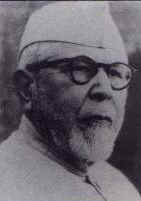
Abdul Majeed Khwaja was an Indian lawyer, educationist, social reformer and freedom fighter from Aligarh. In 1920, he along with others founded Jamia Millia Islamia and later served its vice chancellor and chancellor.
Muhajir culture is the culture of the various Muslims of different ethnicities who migrated mainly from North India in 1947 generally to Karachi, the federal capital of Pakistan and before 1947 Karachi is the capital of Sindh. They consist of various ethnicities and linguistic groups. The Muhajirs are mainly concentrated in Karachi and Hyderabad.
The Aligarh Movement was the push to establish a modern system of Western-style scientific education for the Muslim population of British India, during the later decades of the 19th century. The movement's name derives from the fact that its core and origins lay in the city of Aligarh in Central India and, in particular, with the foundation of the Muhammadan Anglo-Oriental College in 1875. The founder of the oriental college, and the other educational institutions that developed from it, was Sir Syed Ahmed Khan. He became the leading light of the wider Aligarh Movement.
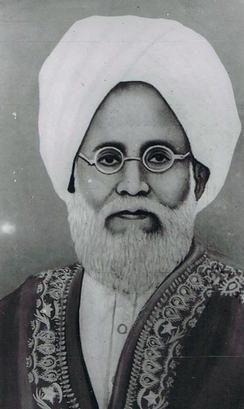
This bibliography of Shibli Nomani is a selected list of generally available scholarly resources related to Shibli Nomani, a poet, philosopher, historian, educational thinker, author, orator, reformer, critic of orientalists and Islamic scholar from the Indian subcontinent during the British Raj, regarded as the father of Urdu historiography. His disciple Sulaiman Nadvi wrote his biography, Hayat-e-Shibli, in 1943. This list will include his biographies, theses written on him and articles published about him in various journals, newspapers, encyclopedias, seminars, websites, etcetera in APA style.
